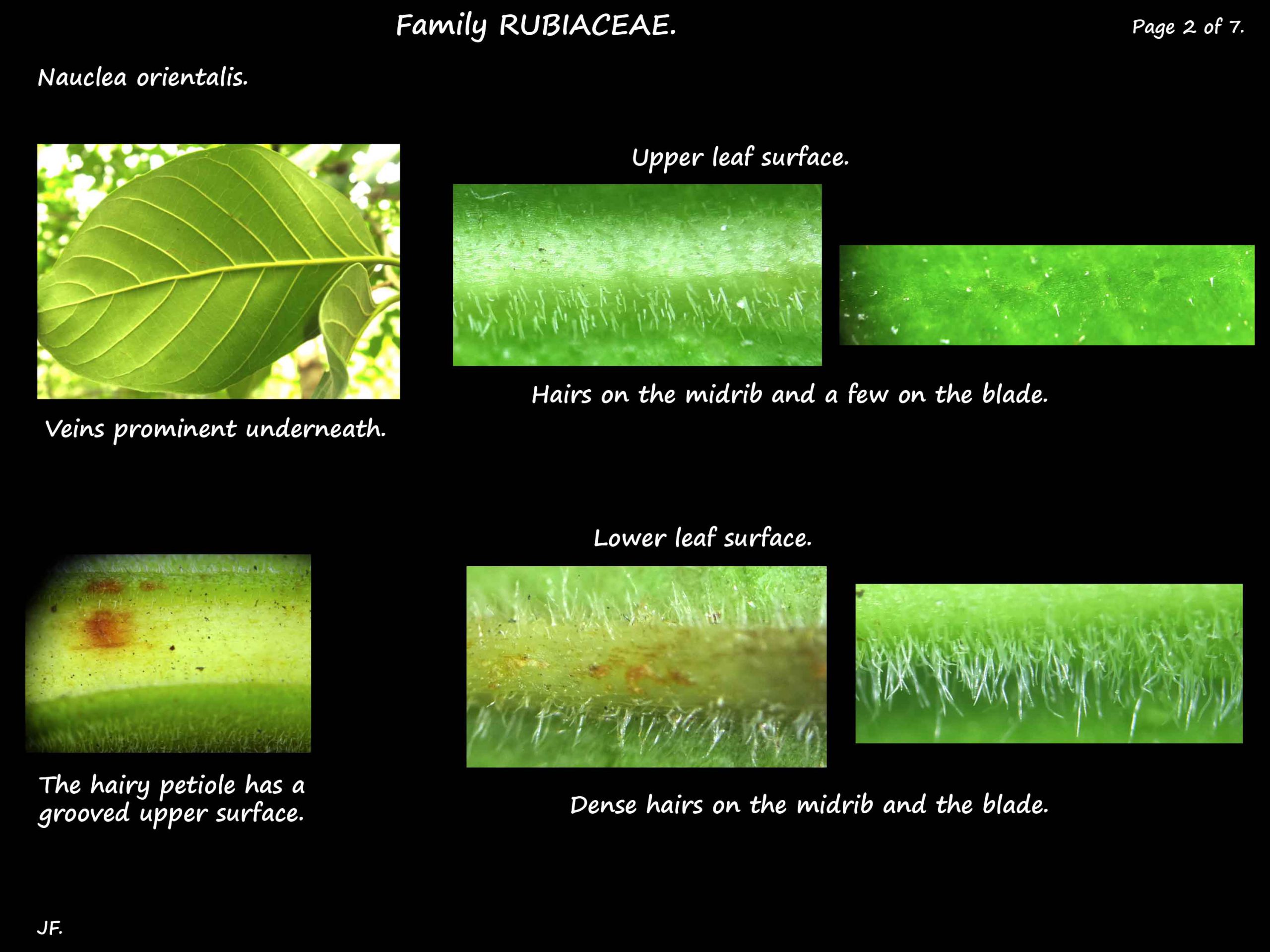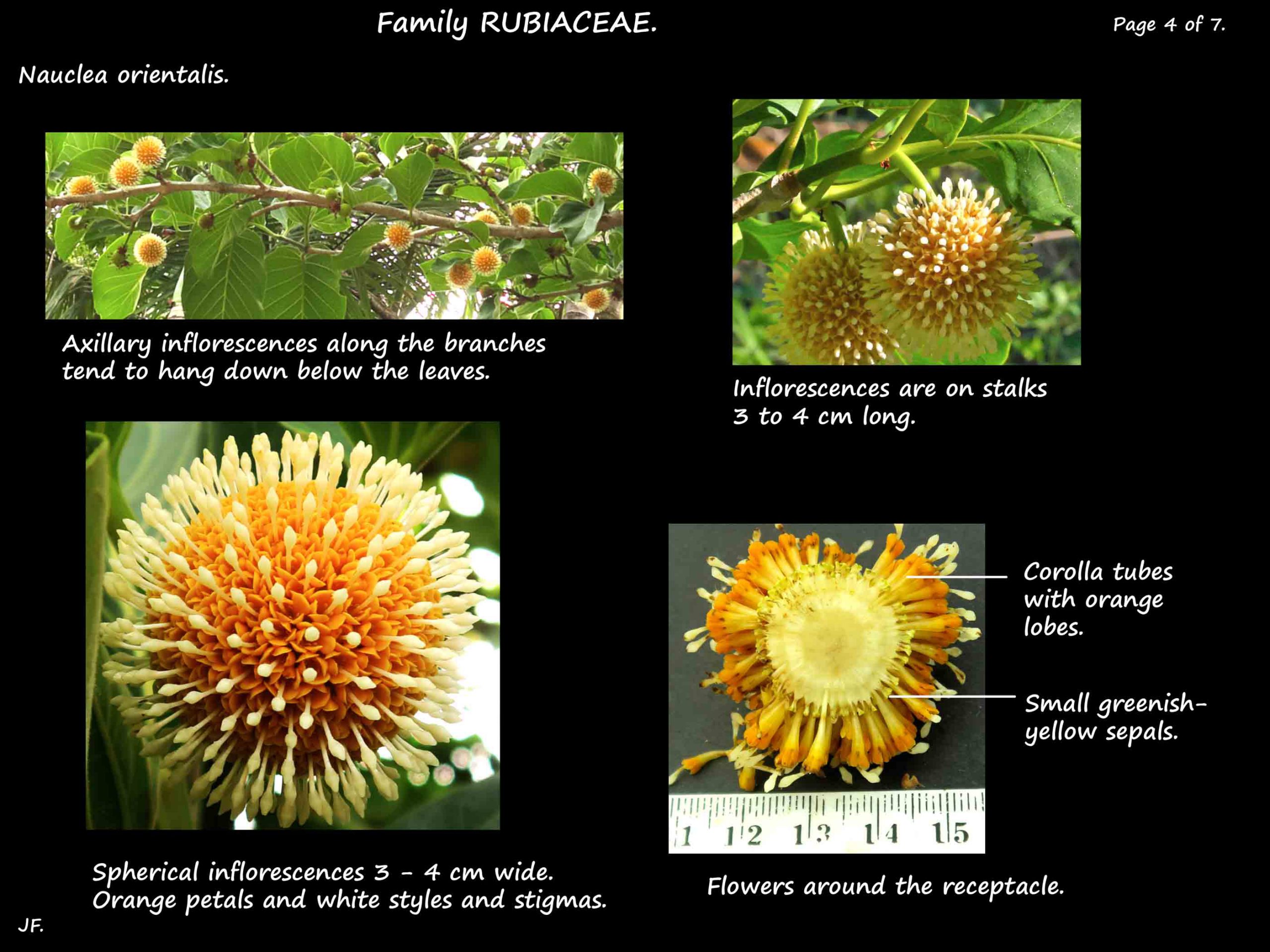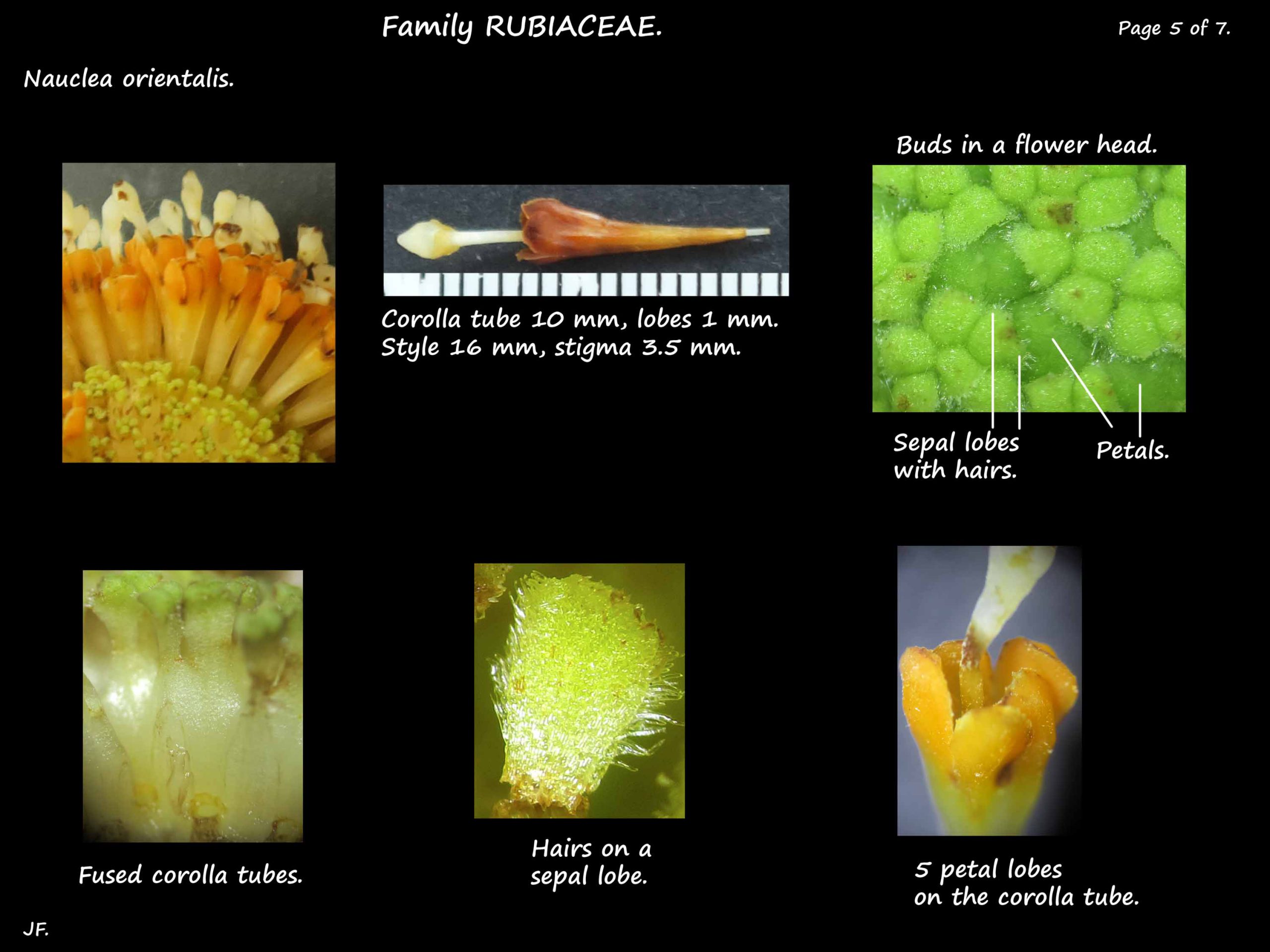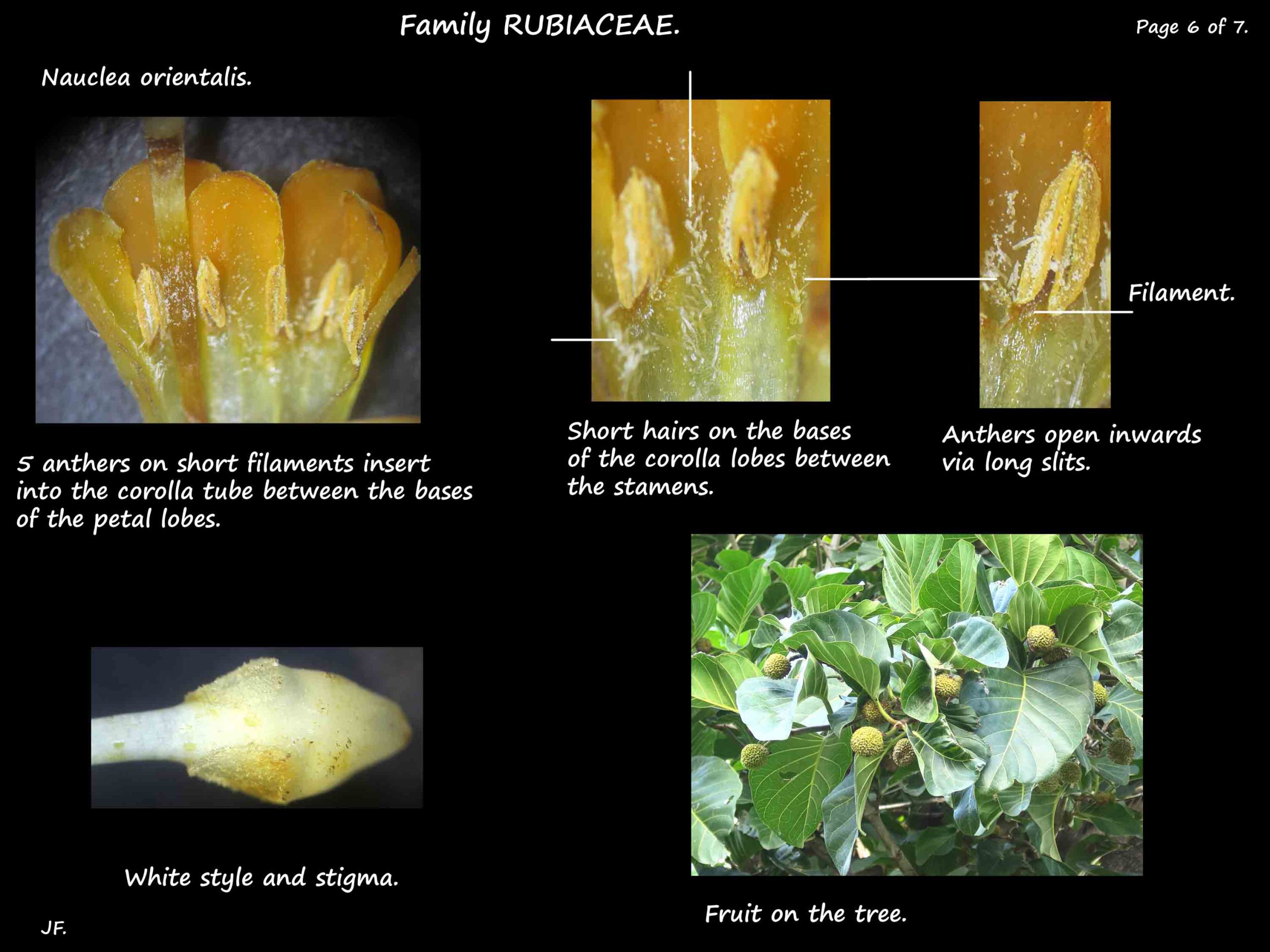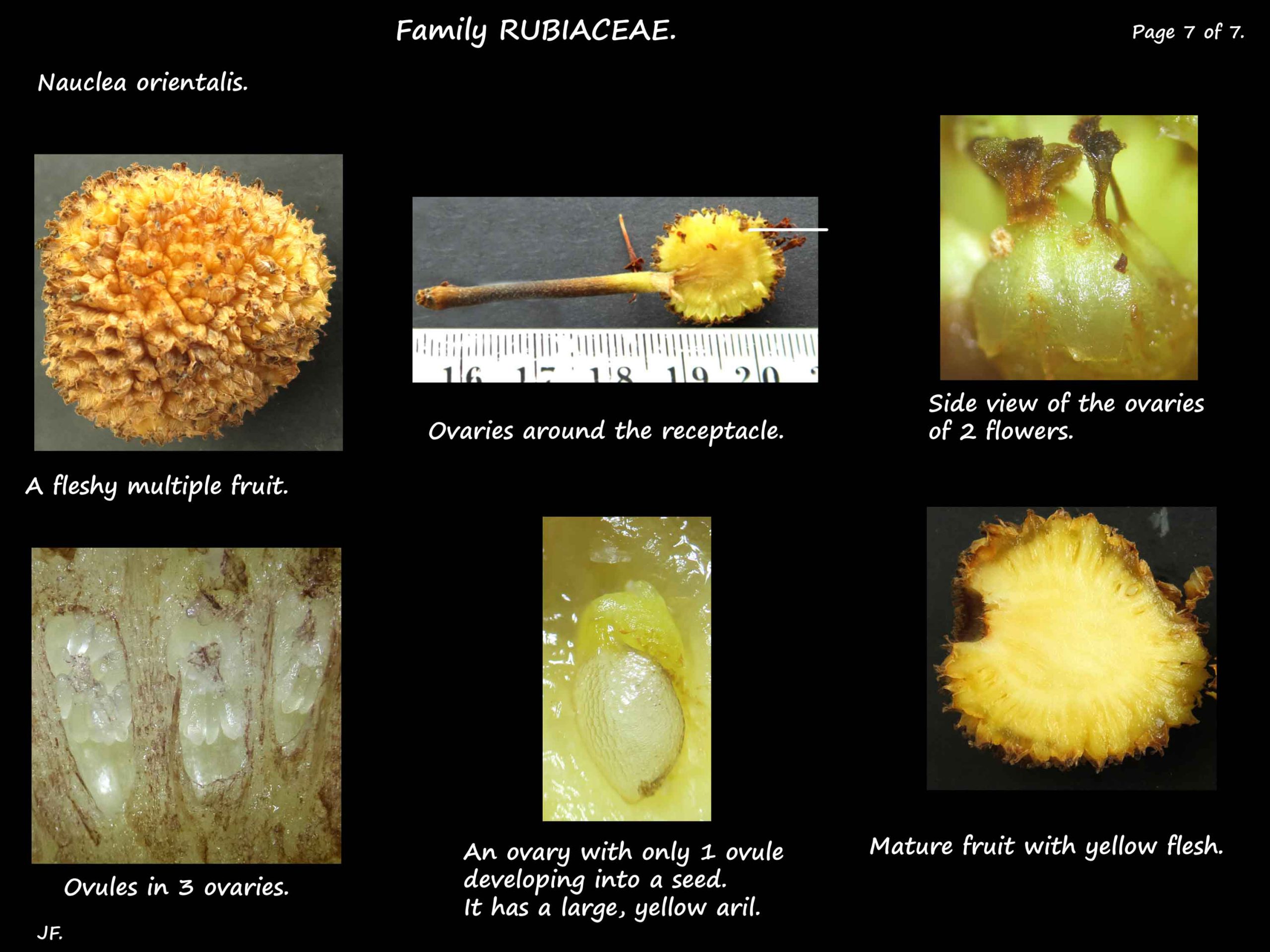Nauclea orientalis.
In Family Rubiaceae it was originally named Cephalanthus orientalis.
Known as the Leichhardt tree or Cheesewood it is one of only 12 species.
Native to S.E. Asia and northern Australia, N. orientalis is the only one found in Australia.
They are occasionally seen in cultivation in Brisbane.
The trees are usually 15 to 20 m high but can grow to 30 m.
The spreading crown is densely covered in leaves.
The brown to grey bark is fissured.
They drop their leaves in late winter to early spring in dry seasons.
The opposite, shiny leaves are on petioles about 5 cm long.
The widely ovate blades are up to 30 cm long and 18 cm wide.
The lower surface is slightly paler with prominent raised veins.
The surfaces have a soft, velvety feel with some hairs, mainly underneath.
New leaf buds are protected by a pair of stipules that lie between the petiole bases.
The green then yellow, ovate stipules are up to 3.5 cm long.
There are some short hairs on the external surface.
At the base of the inner surface is a row of red glands.
The stipules die, turn brown and fall off early leaving a pale scar.
Axillary inflorescences extend for some length along the branches.
They tend to lie under the leaves.
Each consists of a 3 to 4 cm long stalk or peduncle holding a spherical head of flowers.
The heads are 3 – 4 cm wide and each flower is only around 9 mm long and 4 mm wide.
The flowers have parts in 5’s.
The heads are formed by the fusion of the calyx tubes of adjacent flowers.
The petals are fused into a long corolla tube with 2 – 3 mm long lobes on the rim.
The petals are yellow to orange.
The 5 stamens, on almost no filaments, insert into the corolla tube between the lobes.
The inferior ovary has a long white style that extends well past the corolla tube.
The style and the cylindrical white stigma, are the most prominent parts of the head.
The fleshy, brown fruit are up to 5 cm across with a rough surface.
They are a multiple fruit being composed of the fruit of each flower in the head.
The ovoid seeds are 1 to 2 mm in size.
J.F.

